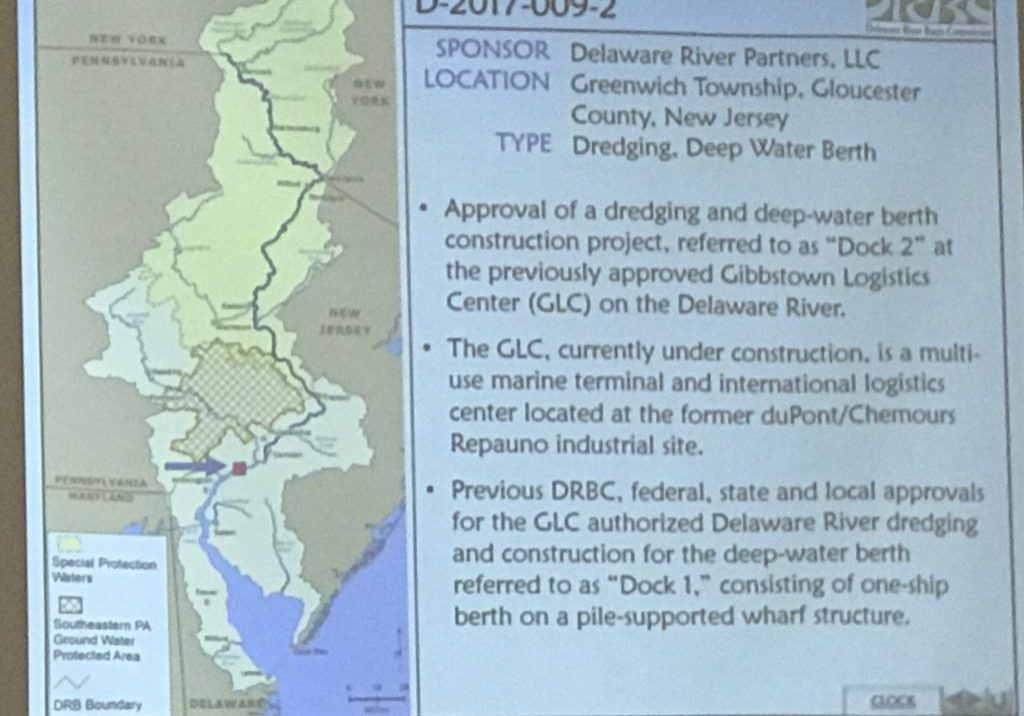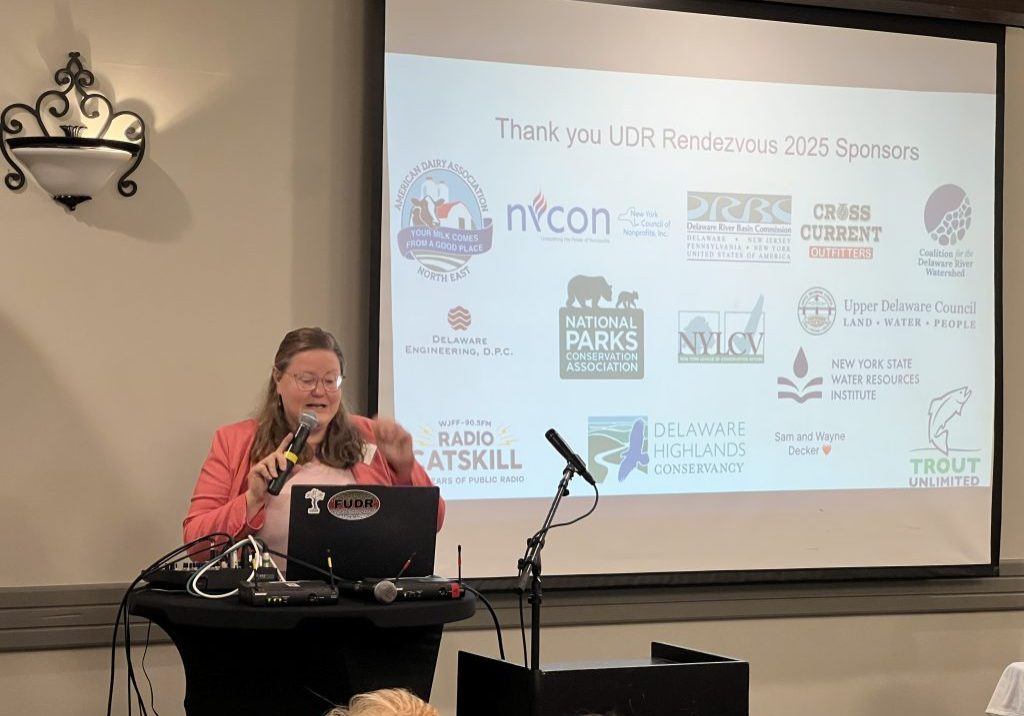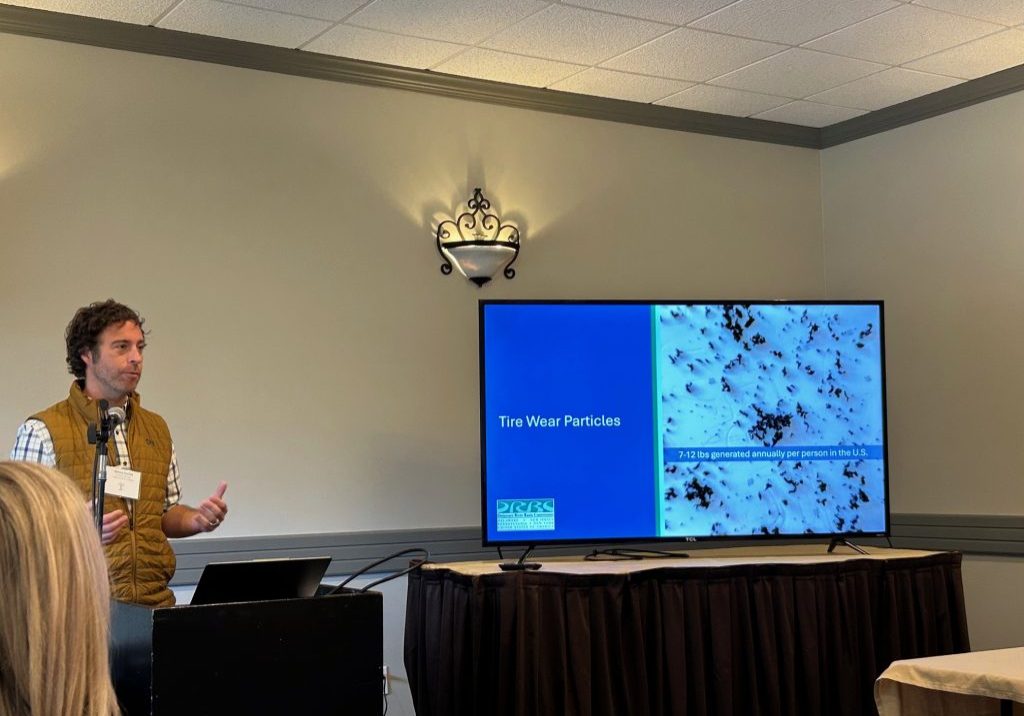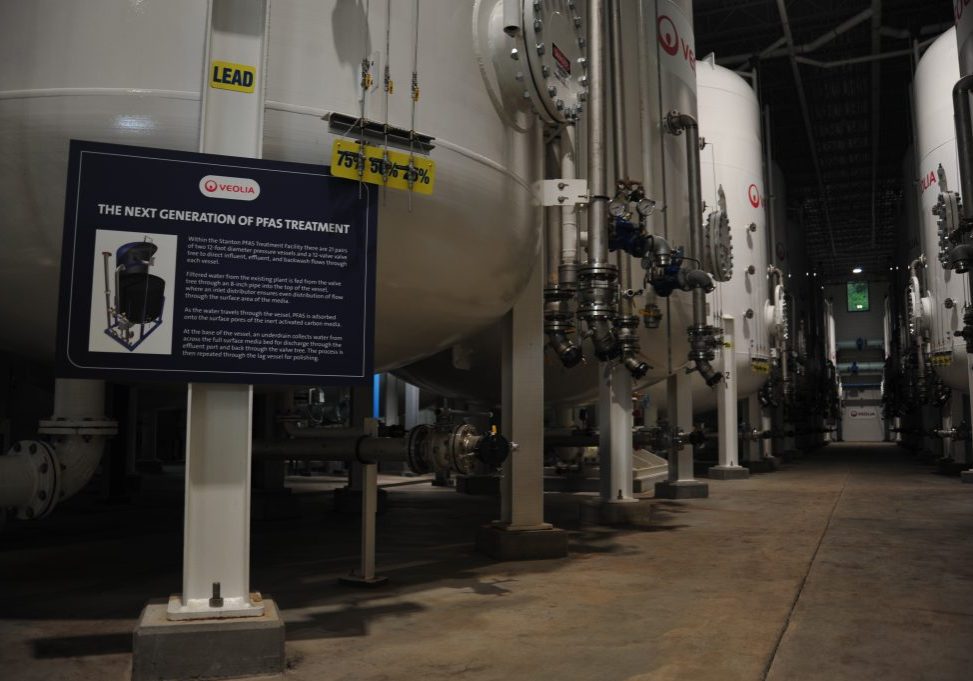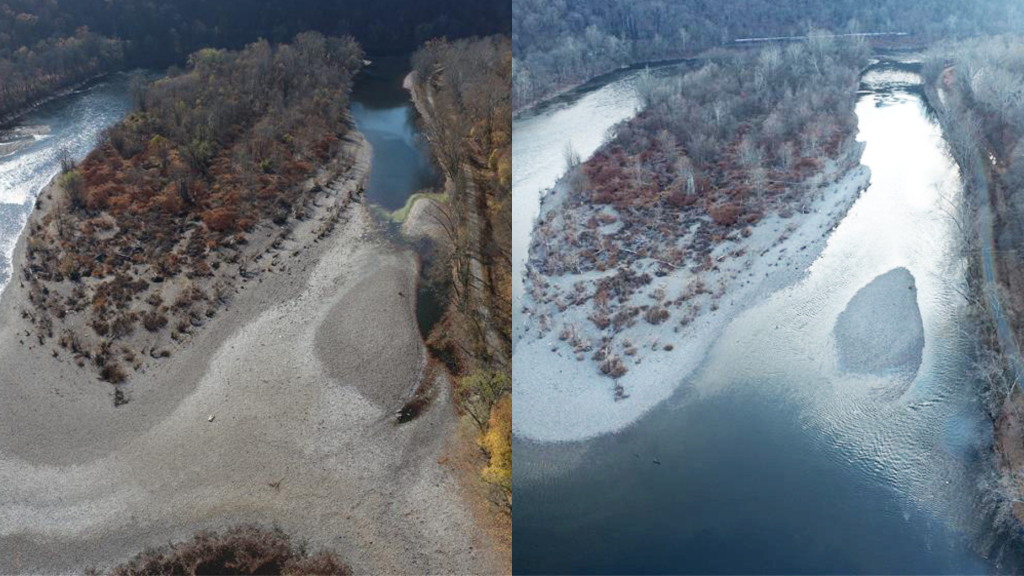
Right: Raub's Island, south of Carpentersville, Pa., on the Delaware River between Pennsylvania and New Jersey. This is after the recent rains, taken on Nov. 30, 2024. Photo courtesy DRBC.
DRBC declares a water-supply emergency, not a drought
| December 7, 2024
Yes, we’ve had rain (and snow) but not enough.
We still have drought watches and warnings all around the river.
Here’s what the state of play as of today:

And here’s why: We got some rain but not enough.

That graphic illustrates that we’re still four inches below normal precipitation for the months of October, November and December in the upper river (lighter brown) and six inches below normal for the lower river (represented by the darker brown).
However, no drought has been declared for the river itself. That’s because that declaration hinges on how full — or not — the New York City reservoirs are. Those reservoirs are Cannonsville, Pepacton and Neversink, and here’s that story:

All of these great graphics (you know that a screen grab is worth a thousand words!) were offered by Amy Shallcross, the Delaware River Basin Commission’s manager of water resource operations at its business meeting on Thursday, which was also the first meeting presided over by the commission’s new executive director, Kristen Bowman Kavanagh.
The dry conditions are further complicated by the Delaware Aqueduct project that — after many years on the drawing board and two unsuccessful attempts to launch — had to be halted by New York City Mayor Eric Adams, who is reopening the aqueduct so the water from those reservoirs can flow into New York again.
Read the comments made at the DRBC meeting about climate change.
A recap: The three immense reservoirs provide about half of New York City’s drinking water. Over the summer, the reservoirs were drawn down to allow enough space in the reservoirs to collect the expected amount of rain during the shutdown. Some people who live downstream of the reservoirs were concerned that the reservoirs should be drawn down even more, because if they were to spill over, there could be significant flooding.
Read more here for our comprehensive coverage of the Delaware Aqueduct project.
Mother Nature outsmarted all of us
The release of water to New York City might take a little while longer because halting the shutdown can’t be done quickly. In the meantime, the reservoirs are releasing to the Rondout Reservoir in preparation for the resumption of using the “old” water tunnel under the Hudson.
When that water goes to New York, the reservoirs are likely to empty further. And if they empty far enough, only then (when the combined storage reaches a low of 42 percent full) will a drought for the river be called by the DRBC. Right now, the combined total for the reservoirs is 51.4 percent.
The river’s response to the ongoing dry conditions has been complicated. The DRBC recognized that some steps needed to be taken, steps that would ordinarily be available when a drought has been declared for the river.
Since it hasn’t, but there is reason to be concerned, especially for the lower river — and that famous salt front — the DRBC passed two resolutions that take some of the steps that might accompany a drought declaration.
In the first, Resolution No. 2024-07, the DRBC declared a “water supply emergency,” and was very clear that this was not — at least not yet — a “drought emergency.”
From the resolution: This action is not a declaration of a “drought emergency” by DRBC or any other jurisdiction, but it allows the help Commission to implement a coordinated response to conserve water in regional reservoirs and protect water users. Future conditions will determine if and when there may be a need to declare a “drought emergency” as a result of declining reservoir storage.
Some important points noted in the resolution:
Any person or organization entitled to withdraw water may continue to do so. But as an aside, it is likely a good idea to keep checking back with the DRBC. Our water situation is pretty volatile.
There’s another section that deals with the intricacies of New Jersey’s right to water. If this is an area of interest, I suggest a close reading of the resolution!
And to be expected, it ends with an encouragement for all of us to use water efficiently.
There was a second action: Resolution No. 2024-08, which authorizes the use of Lake Wallenpaupack in Pennsylvania and the Mongaup system reservoirs in New York to ameliorate the dry conditions.
From the resolution: Delaware River Basin Water Code contemplates that during dry conditions, Lake Wallenpaupack and the Mongaup system reservoirs, among others, “will be utilized to complement the drought management operations of the New York City Reservoirs,” and that “[a]fter issuance of a Conservation Order by the Commission, power generation releases from the Mongaup reservoir system shall be made only in accordance with Commission direction.
The second is linked to the first and both are to stand until:
Term of Special Permit. Implementation of the conditions of this special permit shall begin immediately, and unless the Commission with the unanimous consent of the Decree Parties provides otherwise, shall terminate upon: the date of the Commission’s first quarterly business meeting in 2025, currently scheduled for Wednesday, March 12, 2025; or the date when the combined storage in the New York City Delaware Basin reservoirs (including the projected water runoff equivalent of actual snow and ice within the watersheds tributary to the reservoirs) reaches a level 15 billion gallons above the drought watch line, as defined in Figure 1, and remains above that level for five consecutive days.
Here’s a graphic that illustrates the reservoirs that complement the river’s flow:

Salt line has receded by five miles
No story about dry conditions would be complete without seeing where the salt front stands.
As you know, this is the place in the river where salty ocean water pushes upriver, combatted by the flow of fresh water down river. The less fresh water there is to “push,” the more likely the salt line is to creep upriver.
In the past weeks the salt line has crept up farther than it usually does, prompting the DRBC to use stored water from the Beltzville and Blue March reservoirs to push it down.
Here’s another graphic that shows where it was. (It’s not as far now):



